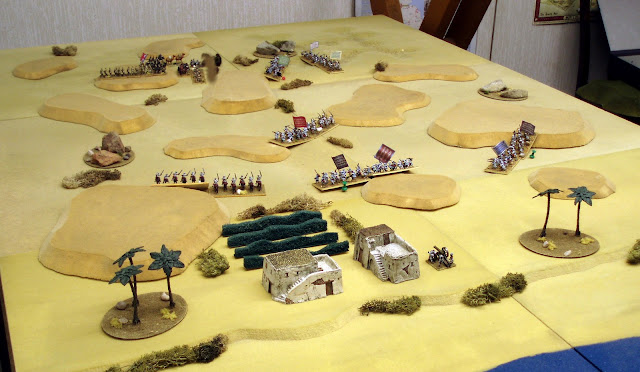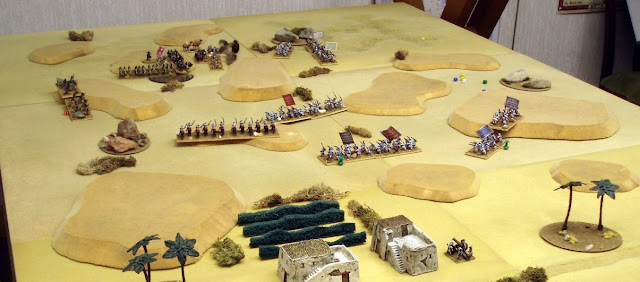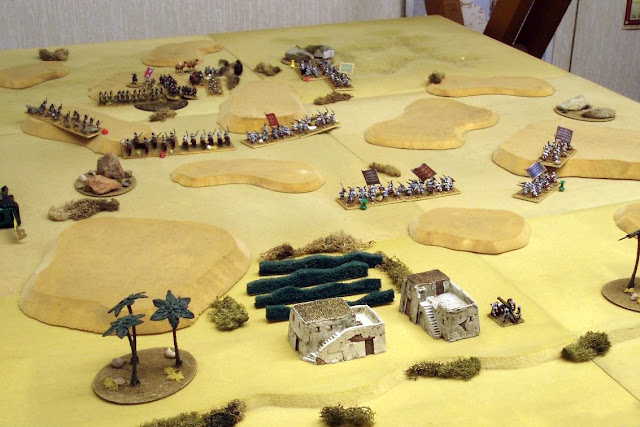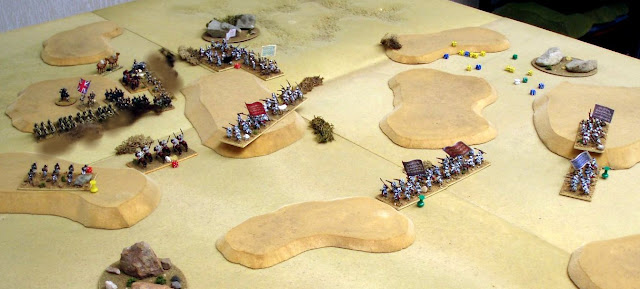As I mentioned previously, the source of my original interest all those years
ago was the chapter in
Donald Featherstone's "Naval War Games"
book that dealt with the action between "Monitor and Merrimac" (sic) at the
Battle of Hampton Roads..
So the cassus belli of my little sub-project is that same battle, using those
same ships I used all those years ago...
The cause of the battle was the Confederate attempt to break the Union naval
blockade of Norfolk and Richmond, and was fought over two days, March 8th and
9th 1862, in Hampton Roads which was the spot where the Elizabeth, Nansemond and
James Rivers meet just near the Chesapeake Bay.
The following from the excellent Wikipedia article shows the area well...
Perhaps more importantly (in history terms anyway) this was also to be the first
naval battle between ironclad warships.
Orders of Battle:
The Confederate fleet consisted of "Virginia" of course, supported by the
tender gunboats (think small, iron hulled, ships) "Raleigh" and "Beaufort", and
ships from the James River Squadron - comprising the gunboats "Patrick Henry"
(left), "Jamestown" and "Teaser".
The Union fleet, known as the North Atlantic Blocking Squadron, was on paper at
least considerably larger and comprised the "Monitor" (who didn't arrive until
the 9th); the 50-gun screw frigates "Minnesota" and "Roanoke"; the 44-gun
sailing frigates "St. Lawrence", "Purviance" & "Congress", plus a 24-gun
sailing sloop-of-war the "Cumberland", and several other smaller gunboats and
support boats (tugs). The problem was that the majority of these were wooden
ships...and Virginia was about to be unleashed like a wolf among sheep....
8th
On the first day of the battle the Confederate force was opposed by only those
conventional, wooden-hulled ships - in fairly short order Virginia destroyed
Cumberland by ramming (but broke her ram in the process, and almost sank when
she couldn't disengage), and Congress by gun fire (including use of red hot
shot) and was about to attack Minnesota (which had run aground
a half mile below Newport News during an
attempt to escape) when the attack was called off due to a falling tide, and
oncoming darkness...
Virginia (above) was not completely undamaged - gun fire on her smokestack had
reduced her already low speed. Two of her guns were disabled and several armour
plates had been loosened. Two of her crew were killed, and more were wounded one
of whom was her Captain.
Clearly round one to the Confederates...
On the night of the 8th, the Confederate squadron remained at anchor off
Sewell's point.
9th
After hurried repairs overnight, Virginia steamed into action the next day to
finish off Minnesota.
During the night, however, Monitor had arrived in the Roads and had taken a
position to defend Minnesota.The two ships opened fire on each other helped by
an occasional (ineffective) broadside from Minnesota...
"After fighting for hours, mostly at close range, neither could overcome the
other. The armour of both ships proved adequate. In part, this was because each
was handicapped in her offensive capabilities. ....
Virginia, had
not expected to fight another armoured vessel, so ... guns were supplied only
with shell rather than armour-piercing shot.
Monitor's guns were used with the standard service charge of only
15 lb of powder, which did not give the projectile sufficient momentum to
penetrate her opponent's armor. Tests conducted after the battle showed that the
Dahlgren guns could be operated safely and efficiently with charges of as much
as 30 lb ...
The battle finally ceased when a chance shell from
Virginia struck the
pilot house of
Monitor and exploded, driving fragments through the
viewing slits into [her captains] eyes and temporarily blinding him. As no one
else could see to conn the ship,
Monitor was forced to draw off. The
executive officer took over, and
Monitor returned to the fight.
In the period of command confusion, however, the crew of
Virginia believed that their opponent had withdrawn. Although
Minnesota was still aground, the falling tide meant that she was out of
reach. Furthermore,
Virginia had suffered enough damage to require
extensive repair. Convinced that his ship had won the day ... ordered her back
to Norfolk. At about this time,
Monitor returned, only to discover her
opponent apparently giving up the fight. Convinced that
Virginia was
quitting, with orders only to protect
Minnesota and not to risk his ship
unnecessarily ... did not pursue. Thus, each side misinterpreted the moves of
the other, and as a result each claimed victory.".
..and there you have it.... if you consider the original Confederate aim, then
in reality this was a Union victory as irrespective of the engagement on the
day, the Union blockade was not broken, and in fact the Union reinforced the
blockade over the next months...
...the scenario I plan to game is the events of the 9th...in effect Minnesota
played little or no part in the engagement so I don't feel a burning need to
represent her on the table top, Virginia was accompanied by the James River
Squadron but they played no part (that I can find) so no need to represent
them...
I hoiked the Featherstone book off the shelf again the other day to refresh my
memory on what rules I had used all those years ago, and can confirm that they
are very simple, but times move on, and while I don't want to count rivets, or
include modifiers for what type of cordite they were using in their shells, I
need something a little more detailed for my little sub project...

So next I reached for that other staple of the old school wargamers library "Sea
Battle Games" by Phil Dunn and I think that these are the rules that I will try
for my game...
Just to conclude - it's worth noting how earth shattering this battle was - once
the news reached out Britain and France stopped all further building of wooden
hulled ships.. full stop.... the new warship design introduced with the Monitor
soon became the standard for all war ships, and the ram also made it's
re-appearance albeit not for as long....
Further Reading:
 ) and as always the Danes to the north are also keen to defeat the Saxon's in order to settle Wessex and Mercia...
) and as always the Danes to the north are also keen to defeat the Saxon's in order to settle Wessex and Mercia...





























